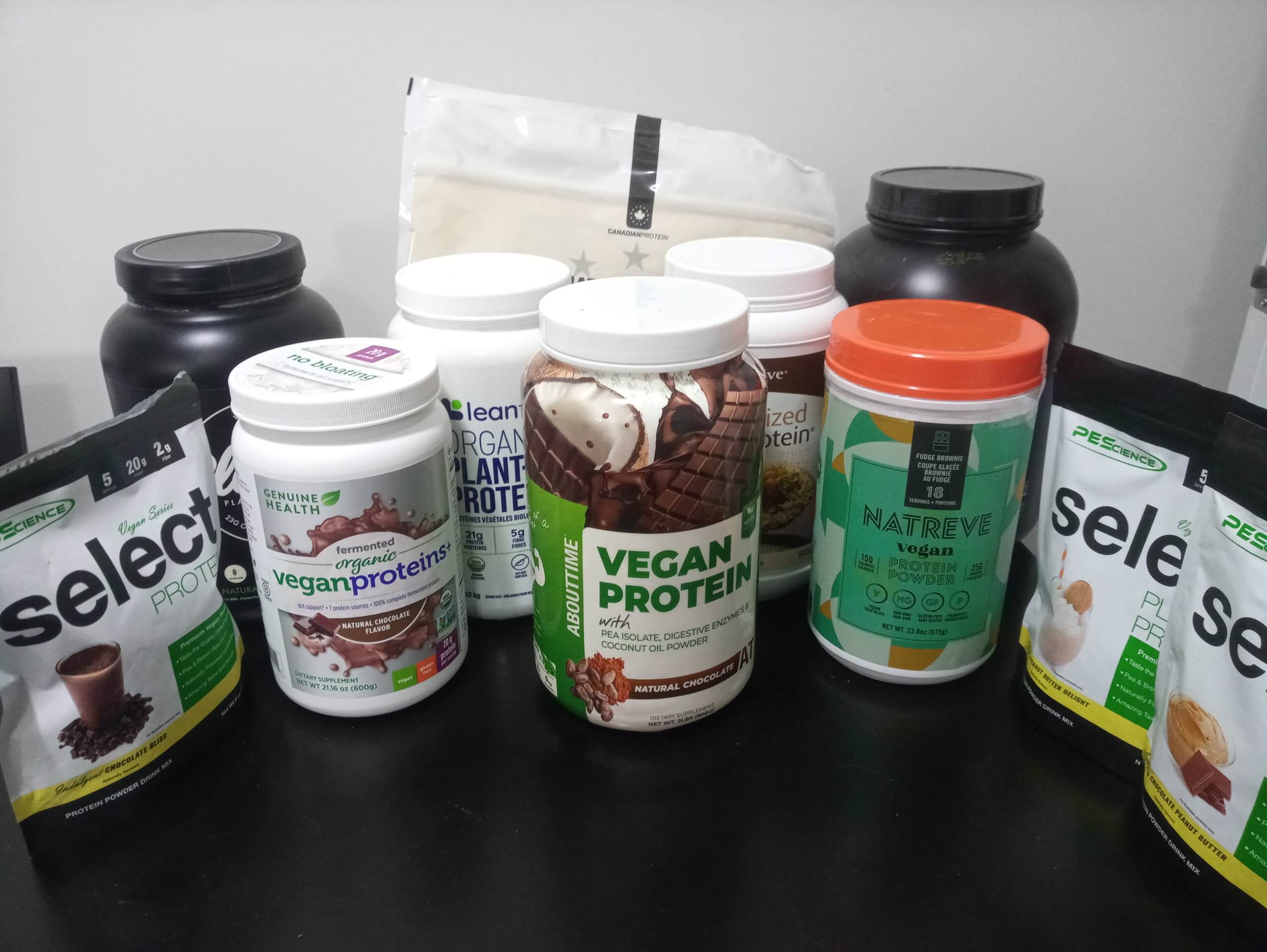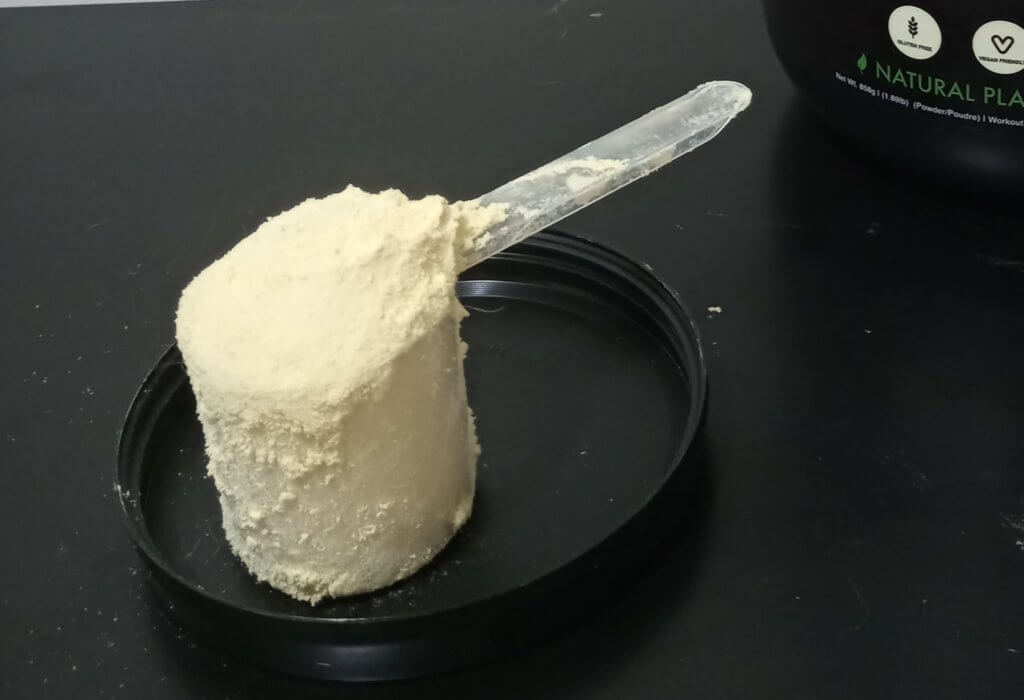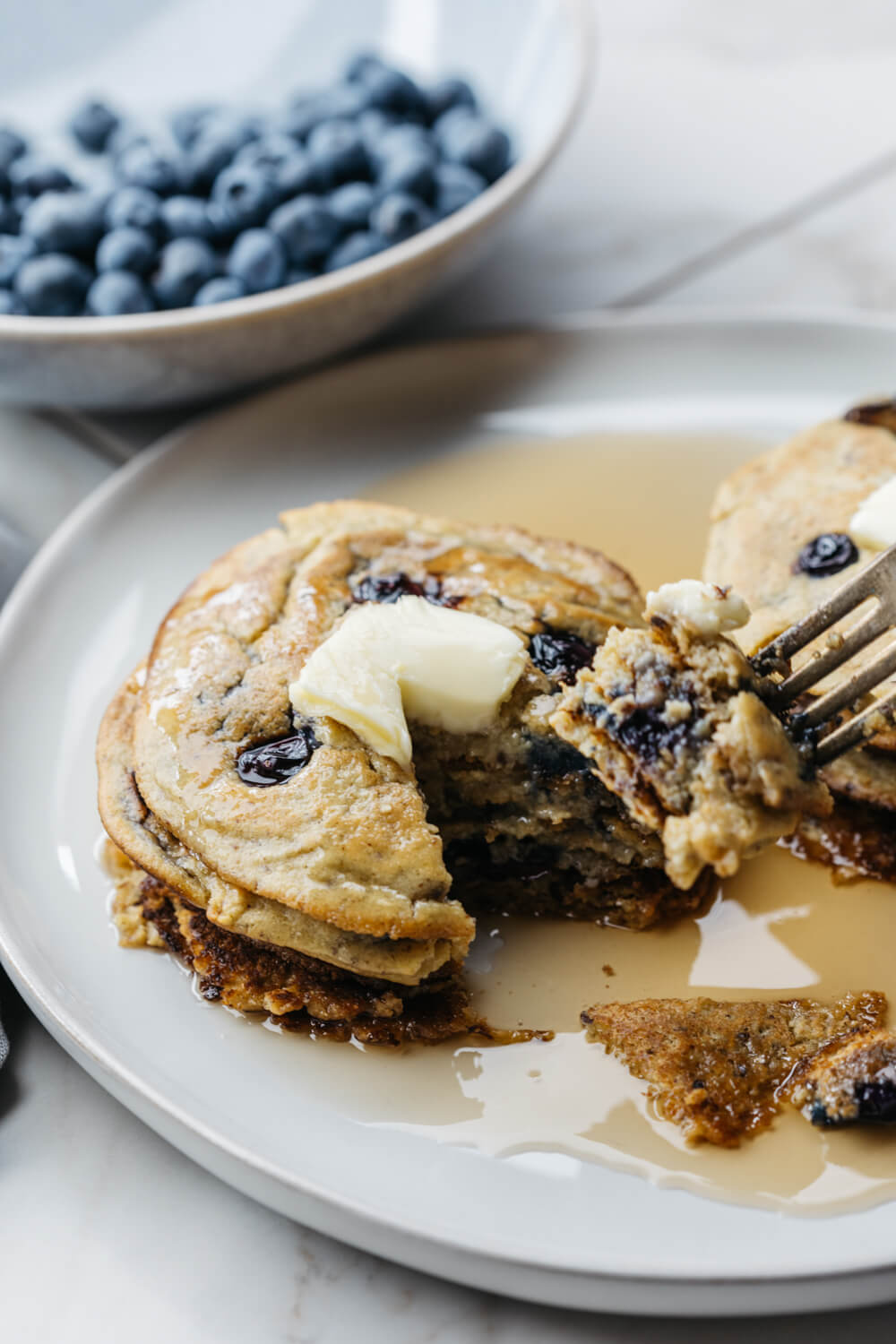Baking with vegan protein powder is an easy way to fit traditionally carbohydrate heavy foods (e.g. muffins, pancakes) into a vegan diet with specific macros.
I’ve done quite a bit of experimenting with cooking with plant-based protein powder, and I’ll walk you through the main things I’ve learned.
If you need a protein powder recommendation, look at my top ranked vegan protein powders in terms of taste, any of them will do nicely.
Table of Contents
Which Vegan Protein Powder Is Best for Baking

You essentially want to think of protein powder as flour that’s more absorbent than usual.
Of the main types of plant protein powder (pea, hemp, rice), pea protein is the best for baking.
It has the most neutral flavor profile and has the best chance at not ruining the texture and taste of a recipe. You can buy one or make your own homemade vegan protein powder to save money.
While you can cook with flavored vegan protein powders, you may have to adjust your other ingredients. For example, using chocolate protein powder means you should reduce the amount of cocoa powder in a recipe. If you’re not sure how to do that, use an unflavored and minimally sweetened protein powder.
I recommend starting with unflavored pea protein powder if you’re new to baking with protein powder. It is possible to use flavored protein powders, but make sure they taste good or they can ruin the recipe quite easily.
How to Adapt a Recipe to Add Vegan Protein Powder

Let’s say you have a normal recipe and want to swap out some flour for protein powder, how do you do it?
My rule of thumb is that vegan protein powder should never make up more than 1/3 of the total amount of flour. Other than that, you swap it in a 1:1 ratio, and add liquid at the end (usually need a bit more, but just add enough to achieve whatever texture you need).
That’s the upper limit, but most recipes will taste best if you keep to about 1/6 the total amount of flour, although you’ll achieve worse macros.
For example, if you have a pancake recipe that calls for 1 cup of flour, you should end up with:
- At least 5/6 cup flour, 1/6 cup protein powder
- No more than 2/3 cup flour, 1/3 cup protein powder
The Effect of Vegan Protein Powder on Macros
The macros of a particular recipe will depend on the type of flour used (e.g. all purpose, almond) and brand of vegan protein powder.
But let me give you an average example using a typical vegan protein powder (PlantFusion) and all purpose flour.
Take that example from above:
| Original | Variation 1 | Variation 2 | |
|---|---|---|---|
| All purpose flour | 1 cup | 5/6 cup | 2/3 cup |
| Protein Powder | 0 | 1/6 cup (~20 g) | 1/3 cup (~40 g) |
| Calories | 442 | 447 | 470 |
| Fat (g) | 1.2 | 3 | 5.3 |
| Carbohydrate (g) | 93 | 79 | 64 |
| Protein (g) | 12.3 | 26.3 | 41.5 |
We’re omitting other ingredients of course, but this illustrates that protein powder does have a large impact on macros.
Even if you’re conservative with it to minimize the effect on taste, protein powder still usually about doubles the amount of protein in a recipe.
Vegan Protein Powder Recipes

I have a few resources to help you find recipes that contain vegan protein powder.
First, my page of over 150 high protein vegan recipes has a filter that you can add protein powder to, which will list several recipes with their macros. You can also see my small collection of my favorite pea protein recipes.
Secondly, I sometimes publish recipes to this blog that contain protein powder. Here are a few of them:
- Keto Vegan Blueberry Protein Pancakes
- Cinnamon Vegan Protein Balls
- The Best High Protein Vegan Peanut Butter Cookies
- Vegan Protein Powder Ice Cream
- The Best Vegan Chocolate Protein Oatmeal Recipe
- High Protein Vegan Banana Bread
- Homemade Vegan Protein Shake Recipes
Is It Better Just to Drink Protein Shakes on the Side?
While I do bake with protein powder sometimes, I usually just drink protein shakes and eat a bit less of whatever recipe (muffins, oatmeal, etc.) that is carbohydrate-heavy.
While protein powder doesn’t have a huge impact on taste if you don’t add too much, it still changes the overall taste (sometimes for the better, sometimes for the worse).
Most importantly, when you add vegan protein powder to a new recipe, you usually have to make it a few times before you find the right amount. Sometimes, your first few batches don’t taste great, which seems like a waste.
So while I encourage anyone to try baking with vegan protein powder, there’s definitely an argument to just use protein shakes on the side to compensate for any meals with poor macros you have.
Questions About Baking With Protein Powder
Can I use protein powder in no-bake recipes?
Yes, you can incorporate protein powder into no-bake recipes, such as energy bars, protein balls, or raw desserts, to boost their protein content without the need for baking.
Do I need to adjust the liquid content in the recipe when using protein powder?
Yes, it’s advisable to adjust the liquid content when using protein powder in a recipe. Protein powder can affect the moisture absorption, so you may need to either increase or decrease the liquid to achieve the desired consistency.
How does protein powder affect the texture of baked goods?
Protein powder can influence the texture of baked goods by adding structure and density. It’s important to be mindful of this impact and adjust other ingredients accordingly to maintain the desired texture in your recipes.
Any tips for preventing a chalky or gritty texture in baked goods with protein powder?
To prevent a chalky or gritty texture in baked goods with protein powder, consider sifting the powder before use and incorporating it gradually into the mixture. Additionally, combining it with moist ingredients and not overmixing the batter can help achieve a smoother texture in the final product.
